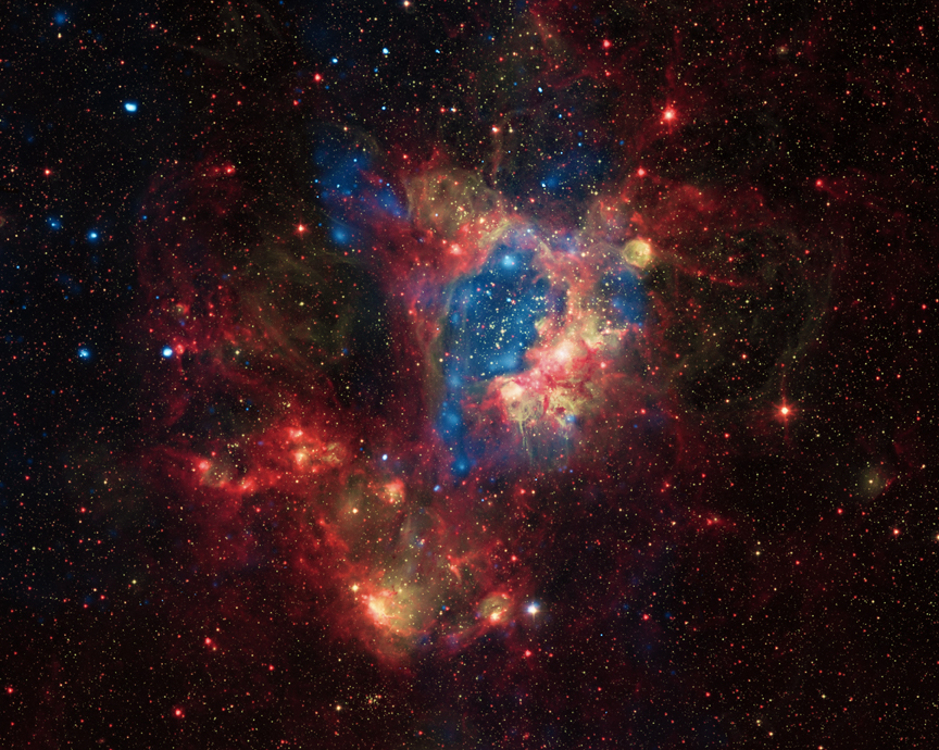
 Credit: X-ray: NASA/CXC/U.Mich./S.Oey, IR: NASA/JPL, Optical: ESO/WFI/2.2-m
Credit: X-ray: NASA/CXC/U.Mich./S.Oey, IR: NASA/JPL, Optical: ESO/WFI/2.2-m
Bubble Bulldozer
Galaxies are structured by the big, blue OB stars they contain. These massive stars form in congregations called OB associations. They generate enormous amounts of high-energy ultraviolet radiation, which flows at the speed of light from the stellar surfaces. This radiation is so intense that it interacts with the outer layers of the stars, imparting momentum to this stellar material and generating a strong, outward-bound stellar wind. OB associations only form in particularly dense, huge interstellar dust clouds. As the big blue stars form, their radiation and winds carve out huge caves within the dust cloud. These stars race through their lives, finally exploding as supernova. This entire process can be studied in detail by the combination of low-energy infrared and high-energy X-ray observations: infrared images show the limits of the dust cave and can find new embedded stars which may be forming along the cave wall; the X-ray observations show the hot shocked gas from the stellar winds (and supernovae) inside the cave. The image above is an extraordinary example of this interaction. It's a composite of Chandra X-ray, Spitzer Space Telescope infrared, and ESO ground-based optical images of the superbubble called NGC 1929 in the Large Magellanic Cloud. The blue X-ray emission fills the cavity of the dust cave, whose outlines are shown by the red infrared emission.
Published: September 3, 2012
<
HEA Dictionary ● Archive
● Search HEAPOW
● Other Languages
● HEAPOW on Facebook
● Download all Images
● Education ● HEAD
>

Each week the HEASARC
brings you new, exciting and beautiful images from X-ray and Gamma ray
astronomy. Check back each week and be sure to check out the HEAPOW archive!
Page Author: Dr. Michael F. Corcoran
Last modified Tuesday, 27-Feb-2024 10:06:50 EST


